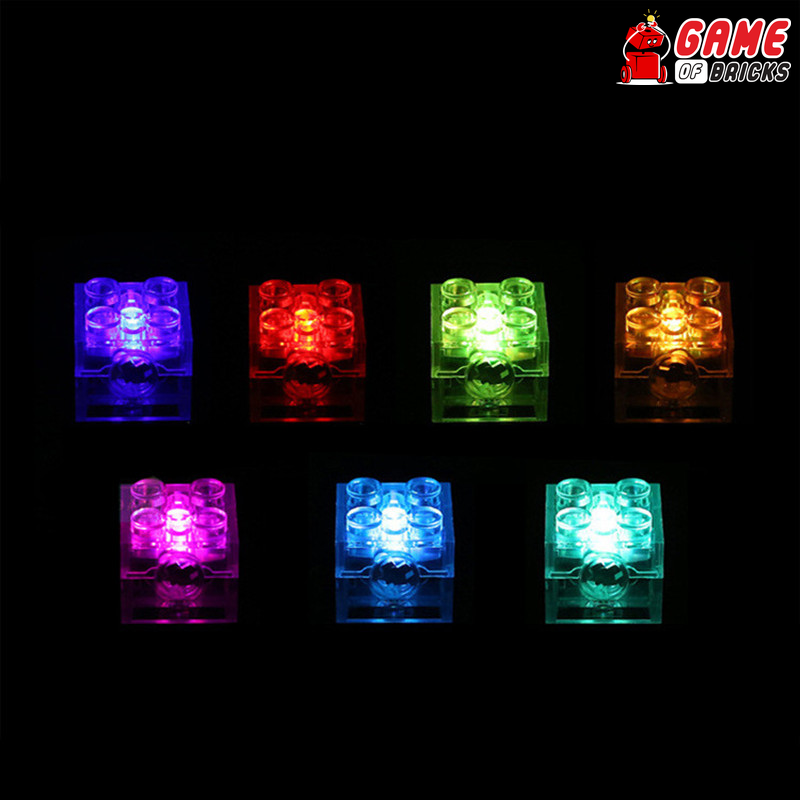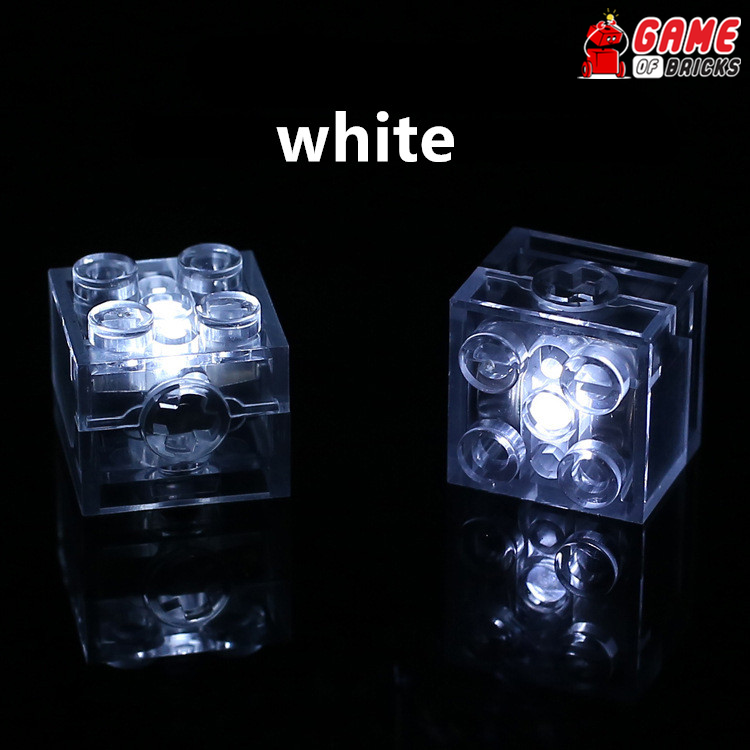Hard-to-Find and Rare LEGO Colors
Two years back, a new hue was included in the LEGO Color Chart. This made the solid colors to reach forty on the palette. The color that was added was not a new one, it was an old color that was reintroduced. What they did was to bring back the 107—Bright Bluish Green. This hue was reintroduced in the #10260 Downtown Diner set that was released a while back. If you want to see this hue, it can also be seen if you buy the 2018 Elves sets.
Before this time, the newest hue had been introduced in the Friends line, which was in the year, 2012. During that year, they brought in Medium Azur, Spring Yellowish Green, Medium Lavender, Olive Green, and Aqua.
Apart from the aforementioned colors, they also brought in Lavender and Dark Azur the year before.
Usually, when LEGO introduces a new hue, a lot of fans are interested. They do the same when a hue is tweaked or retired. The same can be said for model builders. Usually, it takes a longer time before a new hue can be gotten in different parts. For a long time, the number of parts that you may be able to buy in that new hue may be limited. This means that their usefulness will be restricted for a long time. After a while, it will be easier to get different parts in that hue.
Instead of merely jubilating that new hues have been made, we will take a look at solid colors and rare hues in the LEGO world. It is important to note that not every color comes in the same number.
Lego bricks colors
In the world of LEGO, the ten commonest Lego colors usually make up about eighty percent of the bricks that are created annually. The rest of the hues, which are thirty, make up the remaining twenty percent of the parts that are made. They can be ranked from those that are relatively uncommon to those that are very rare.
Lego color chart
Those hues that you will see regularly in LEGO sets are:
194—Medium Stone Grey Lego Color:
This hue takes the form of Light Bluish Gray, and it makes up fifteen percent of the entire colors made by LEGO annually.
1—White:
As its name states, this is white, and it makes up thirteen percent of the entire hues made by LEGO annually.
199—Dark Stone Grey
This hue takes the form of Dark Bluish Gray, and it makes up eleven percent of the entire colors made by LEGO annually.
26—Black:
As its name states, this is black, and it makes up eleven percent of the entire hues made by LEGO annually.
5—Brick Yellow
This hue takes the form of Tan, and it makes up seven percent of the entire colors made by LEGO annually.
192—Reddish Brown
As its name states, this is reddish-brown, and it makes up six percent of the entire hues made by LEGO annually.
21—Bright Red
This hue takes the form of red, and it makes up five percent of the entire colors made by LEGO annually.
24—Bright Yellow
This hue takes the form of yellow, and it makes up four percent of the entire colors made by LEGO annually.
138—Sand Yellow
This hue takes the form of dark tan, and it makes up four percent of the entire colors made by LEGO annually.
23—Bright Blue
This hue takes the form of blue, and it makes up three percent of the entire colors made by LEGO annually.
We will look at those hues that do not have common hues. We will go across some common tiles, plates, and bricks.
Hues That Are Common, Uncommon, and Rare
Common colors
These hues can be in every part or in almost all of them. This means that you can decide to use the color throughout to build whatever you crave for. You won't have to worry about substitution because almost every part can be gotten in this hue.
Uncommon Colors
These hues can be seen in many parts, but there are some that are missing, which may leave you having to substitute. This can be all shades of annoying. They are not as common as the common colors.
Rare Colors
These hues come in a few parts. This means that you may not be able to see every part in these hues if you intend to build with them. You can utilize them as the accent color in your models. They can be used to decorate the model for aesthetic purposes, but if you want to build an entire set with only this hue, it will be almost impossible.
Common Colors
It is important to note that the hues in this group are quite common, though some are more common than the others. If you are thinking of creating a project, you should consider putting these hues in mind.You can get different parts in these hues. All you need to do is order online.
The following are common colors:
154—Dark Red
As its name states, this is dark reddish, and it is a common hue in the entire hues made by LEGO annually. LEGO introduced into its world in 2001.
138—Sand Yellow
As its name states, this is dark tan, and it is a common hue in the entire hues made by LEGO annually. LEGO introduced into its world in 2002. You can see this in a lot of basic parts.
191—Flame Yellowish Orange Lego bricks
As its name states, this is bright light orange, and it is a common hue in the entire hues made by LEGO annually. LEGO introduced into its world in 2004. You can see it in most basic parts, but it is not as common as the rest.
324—Medium Lavender Lego Color
As its name states, this is medium lavender, and it is a common hue in the entire hues made by LEGO annually. LEGO introduced into its world in 2012.
322—Lego Medium Azur
As its name states, this is medium Azur, and it is a common hue in the entire hues made by LEGO annually. LEGO introduced into its world in 2012.
Uncommon Colors
The hues in this set may be relatively common, but you can't see them all in the commonest LEGO parts. You can only see between four and nine in those parts, which can be annoying. You may not see a lot of specialty sets in these hues. If you are a builder, this is all shades of annoying.
If you are looking for specialty sets for the purpose of introducing extra details to these sets, you may not see them in these hues. A lot of great colors fall under this category, though some of them are quite new.
140. Earth Blue
This hue takes the form of dark blue, and it offers the models and sets greater depth.
151. Sand Green
This hue takes the form of low saturation colors, and it is just for forming those weathered copper surfaces if you want.
38. Dark Orange
This hue is a great compliment to hues that have earthy tones or bright tones.
222. Light Purple
As its name states, this is a medium pink, and it makes up the uncommon hue group of the entire hues made by LEGO annually.
268. Medium Lilac
As its name states, this is dark purple, and it makes up the uncommon hue group of the entire hues made by LEGO annually.
124. Bright Reddish Violet
As its name states, this is magenta, and it makes up the uncommon hue group of the entire hues made by LEGO annually.
221. Bright Purple
As its name states, this is dark pink, and it makes up the uncommon hue group of the entire hues made by LEGO annually.
The last four are the most common purple and pink hues that you may come across.
Image source: www.brickset.com
What Is The Rarest Lego Color?
These are the hues that are very rare in the commonest parts. Two Flesh hues are used mostly in Minifigure hands and heads, but you see them being used in other parts.
Many of the rarest lego brick color hues are not new. The 135. Sand Blue came out in 2001, yet it is rare. You can see it only in twelve of the twenty-four commonest parts. The 312. Medium Nougat is one hue that can't be seen in plates but may be seen in bricks.
Conclusion:
Now, you know the types of hues that can be seen regularly and those that are rarely seen.
1 comment
Top












what color is number 17 ?
Leave a comment